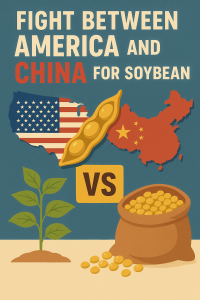History of mughal empire in English
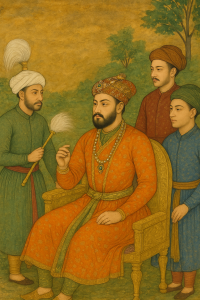
History of the Mughal Empire
The Mughal Empire, one of the greatest empires in Indian history, ruled a significant portion of the Indian subcontinent for over three centuries. Its history is a rich tapestry of politics, culture, art, and architecture.
Introduction to the Mughal Empire
The Mughal Empire was established in 1526 by Babur, a descendant of Timur and Genghis Khan. The empire reached its zenith under rulers like Akbar, Jahangir, and Shah Jahan, leaving a lasting impact on India’s political, cultural, and architectural heritage. The Mughal period is known for its administrative excellence, religious tolerance (especially under Akbar), and monumental architecture.
Origin of the Mughals
The Mughals were of Turko-Mongol origin, hailing from Central Asia. Babur, the founder, traced his lineage to both Timur (on his father’s side) and Genghis Khan (on his mother’s side). His invasion of India marked the beginning of a new era in the subcontinent.
Babur and the Foundation of the Mughal Empire (1526-1530)
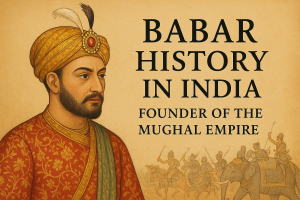
- Battle of Panipat (1526): Babur defeated Ibrahim Lodi, the Sultan of Delhi, marking the beginning of Mughal rule in India.
- Challenges: Babur faced resistance from Rajputs and Afghan chieftains.
- Legacy: Babur laid the foundation of the Mughal administrative and military system.
- Babur history
Humayun’s Reign (1530-1556)

- Humayun, Babur’s son, inherited a fledgling empire.
- Struggles: He faced internal rebellions and was temporarily defeated by Sher Shah Suri, the Afghan ruler.
- Exile: Humayun spent years in Persia, learning new military and administrative techniques.
- Return: He regained the throne in 1555 but died shortly after.
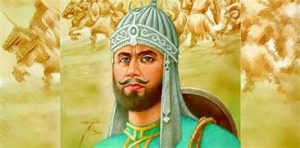
Sher Shah Suri Interregnum (1540-1555)
Though not a Mughal, Sher Shah Suri briefly interrupted Mughal rule. He is famous for:
- Introducing the Rupiya (currency)
- Establishing a strong administrative system
- Improving roads and trade routes
Sher Shah’s reforms later influenced the Mughal administration under Akbar.
Akbar the Great (1556-1605)
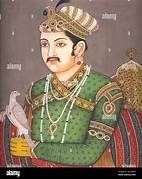
Akbar is often regarded as the greatest Mughal emperor.
Military Expansion
- Akbar consolidated Mughal power by defeating the Rajputs and expanding into central and northern India.
Administrative Reforms
- Introduced the Mansabdari System
- Created a centralized administrative structure
- Promoted revenue reforms
Religious Policies
- Known for Sulh-i-Kul (peace with all religions)
- Married Rajput princesses and encouraged dialogue among religious leaders
Cultural Contributions
- Akbar patronized art, literature, and architecture.
- Built Fatehpur Sikri, a symbol of Mughal architectural brilliance.
Keywords: Akbar Mughal, Mughal administration, Fatehpur Sikri, Sulh-i-Kul
Jahangir (1605-1627)
- Son of Akbar, continued expansion and consolidation.
- Known for his interest in art and architecture, especially Mughal miniature paintings.
- Strengthened administration and justice system.
Shah Jahan (1628-1658)
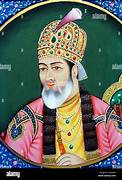
- Famous for architectural marvels, including the Taj Mahal, Red Fort, and Shah Jahan Mosque.
- Oversaw the golden age of Mughal architecture.
- His reign saw luxury and cultural flourish, though at the cost of heavy taxation.
Aurangzeb (1658-1707)
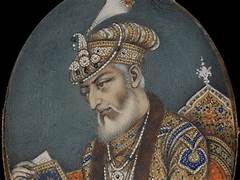
- Expanded the Mughal Empire to its largest territorial extent
- Known for strict religious policies, including reimposition of the jizya tax on non-Muslims
- Military campaigns stretched the empire thin
- Faced revolts from Marathas, Sikhs, and Rajputs
Decline of the Mughal Empire
After Aurangzeb’s death in 1707, the Mughal Empire declined due to:
- Weak successors
- Internal rebellions
- European colonial expansion (British, French, Dutch)
- Rise of regional powers like the Marathas, Sikhs, and Nizams
By the mid-19th century, the British had effectively taken over India, marking the end of Mughal sovereignty with the exile of Bahadur Shah Zafar in 1858.
Mughal Culture and Contributions
Art and Architecture
- Mughal miniature paintings
- Palaces, forts, and gardens (e.g., Taj Mahal, Red Fort)
- Blend of Persian, Indian, and Islamic styles
Literature
- Persian was the court language.
- Works in poetry, chronicles, and historical accounts
Economy and Trade
- Agriculture-based economy
- Trade with Europe, Central Asia, and the Middle East
Religion
- Akbar promoted religious tolerance.
- Aurangzeb enforced Islamic laws.
Legacy of the Mughal Empire
- Established administrative systems later adopted by the British
- Influenced Indian art, culture, language, and architecture
- Promoted religious and cultural synthesis
- Left an enduring legacy in modern India and Pakistan
Conclusion
The Mughal Empire was one of the most influential empires in Indian history. Its contributions in administration, architecture, culture, and art continue to shape the Indian subcontinent. Despite its decline, the Mughal legacy lives on through monuments, literature, and historical records, making it a cornerstone of India’s rich history.
Mughal Emperors and Their Names
-
Babur (r. 1526–1530)
-
Full Name: Zahir-ud-din Muhammad Babur
-
Founder of the Mughal Empire
-
-
Humayun (r. 1530–1540, 1555–1556)
-
Full Name: Nasir-ud-din Muhammad Humayun
-
Babur’s son, temporarily dethroned by Sher Shah Suri
-
-
Akbar (r. 1556–1605)
-
Full Name: Jalal-ud-din Muhammad Akbar
-
Known as Akbar the Great
-
-
Jahangir (r. 1605–1627)
-
Full Name: Nur-ud-din Muhammad Salim
-
Took the title Jahangir meaning “Conqueror of the World”
-
-
Shah Jahan (r. 1628–1658)
-
Full Name: Shahab-ud-din Muhammad Shah Jahan
-
Known for Taj Mahal and architectural contributions
-
-
Aurangzeb (r. 1658–1707)
-
Full Name: Muhi-ud-din Muhammad Aurangzeb Alamgir
-
Known for expansion and strict Islamic policies
-
-
Bahadur Shah I (r. 1707–1712)
-
Full Name: Mu’azzam Shah
-
Son of Aurangzeb, tried to maintain the empire’s unity
-
-
Jahandar Shah (r. 1712–1713)
-
Farrukhsiyar (r. 1713–1719)
-
Rafi ud-Darajat (r. 1719)
-
Shah Jahan II (r. 1719)
-
Muhammad Shah (r. 1719–1748)
-
Known as Rangeela, famous for his love of arts and culture
-
-
Ahmad Shah Bahadur (r. 1748–1754)
-
Alamgir II (r. 1754–1759)
-
Shah Jahan III (r. 1759–1760)
-
Shah Alam II (r. 1760–1806)
-
Akbar Shah II (r. 1806–1837)
-
Bahadur Shah II (r. 1837–1857)
-
Also called Zafar, last Mughal emperor, exiled by the British after 1857 revolt.
-



